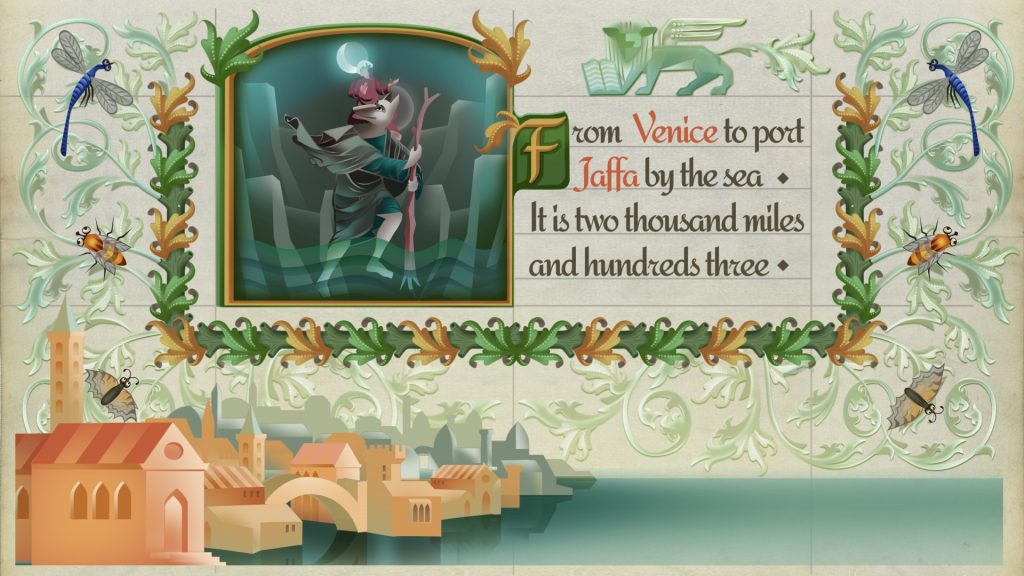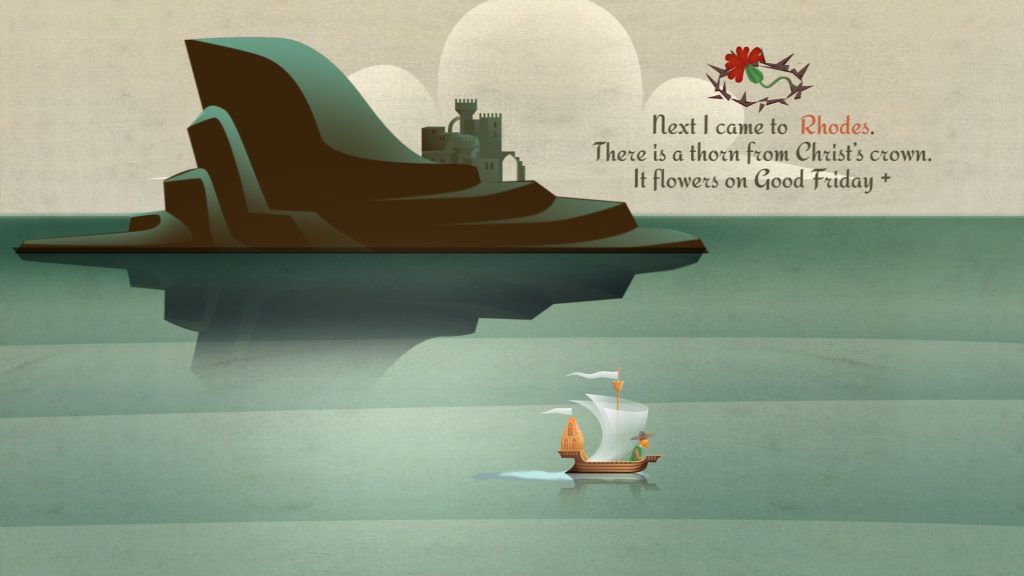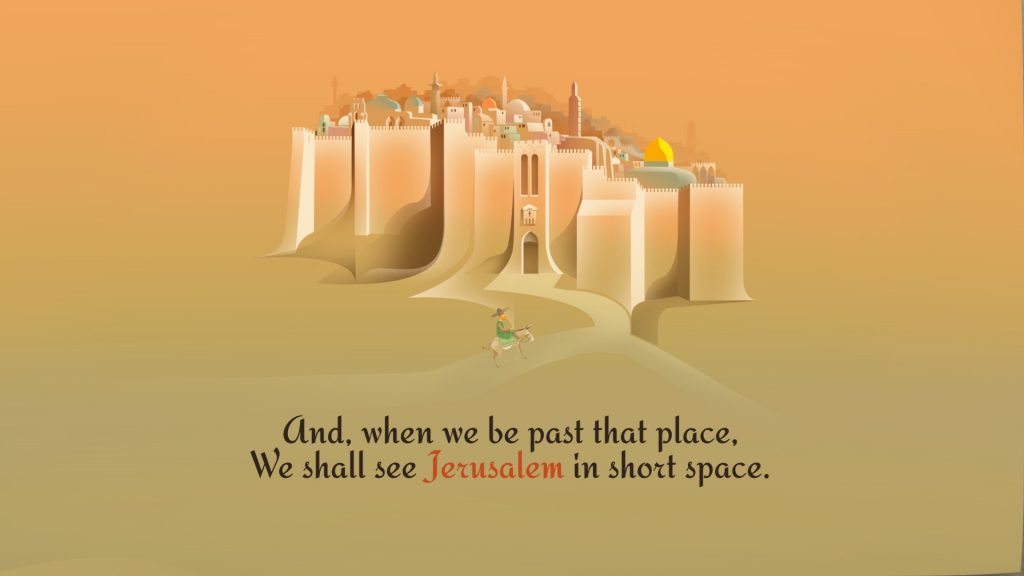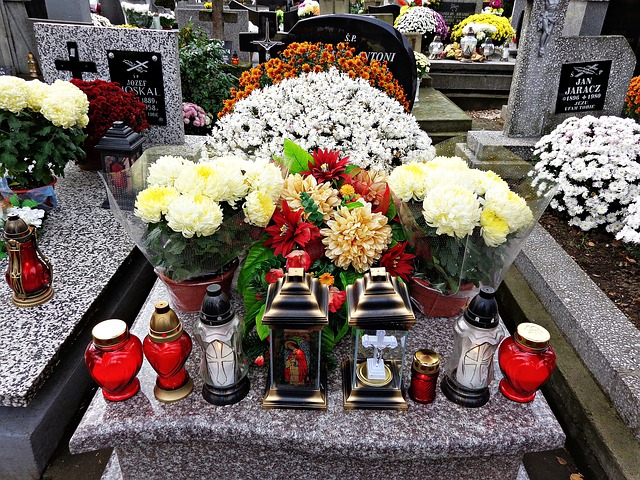Professor of Medieval Studies Anthony Bale discusses his work with Birkbeck’s artist in residence, animator Shay Hamias. Together, they are developing a new interface between contemporary digital animation and medieval studies.

This year Birkbeck received one of only 19 prestigious Leverhulme Trust Artist-in-Residence awards. The residency is supporting animation artist Shay Hamias to work with me in Birkbeck’s School of Arts. Hamias is an animation director, with experience working on short and feature films, advertisements, and the museum and heritage sectors. Hamias’ work creatively explores the visual possibilities of design, motion and narrative, seeking new ways to interpret the medium. Hamias had long been fascinated by the artistry of medieval manuscripts, their combination of the written word and visual effects, and their engagement with religious belief. So the Leverhulme Artist-in-Residence award provided a superb opportunity to develop a completely new interface between contemporary digital animation and medieval studies.
Hamias and I share an interest in the meanings of images and symbolism, in particular, the religious symbolism in Christianity and Judaism. Our project has sought to put modern design in conversation with medieval artefacts in a bold new way. We have tried to test that idea, proposed by many scholars of medieval culture, that the pages of medieval books are ‘alive’ and animate, full of ‘active’ visual and mnemonic effects for the reader. Can contemporary animation engage in a fruitful and stimulating encounter with the often perplexing but beautiful images we find in medieval manuscripts? In medieval manuscripts, design and illustration are provided as tools for the viewer/reader to enable them to decode biblical narratives, using a visual language that would resonate with them and locate them mentally.

In the creative process, the artist looks at a subject from a personal point of engagement with it, combined with established ways of seeing. Animation lends itself to translating inner thought and inner states, in a creative process based on lateral approaches to thinking and the use of associative emotions and imagination. Hamias and I have been thinking about how parallels might be drawn between modern visual language and medieval visuals. Might traditional techniques be applied to modern narratives, in a creative anachronism?
Formally, medieval manuscripts have much in common with modern animation: both condense time and space, through discontinuous visual and verbal narrative; both can rapidly illustrate change over a long period and produce memorable narrative through a ‘familiar’ iconography and media in service of popularly-held or generally-endorsed views; both can reveal metamorphosis and sudden change, sudden effects which are accepted by audiences because of their familiarity with the world created by the medium.

The emphasis of the residency is on Hamias’ artistic and creative freedom to respond to medieval sources in his own distinctive way. Hamias and I have met at least weekly during the residency, sometimes in libraries and archives with medieval manuscripts in front of us. The first animation project we have produced focusses on pilgrimage and visual movement. We have taken the idea of ‘visual storytelling’ and given it a contemporary take. We feel that our methodology remains ‘medieval’: our project is constructed entirely from things we have read in medieval texts or found in medieval visual culture. Moreover, Hamias put himself in a similar position to the medieval artist, who was imagining things based largely on received stories and depictions. Our first short animated film is called ‘The Matter of Jerusalem’, after William Wey’s 1460s manuscript book which describes the journey from Venice to Jerusalem.
We now have plans to develop this film and to collaborate on an exhibition about Birkbeck’s own medieval books in summer 2018.
You can follow Anthony and Shay’s project on their Instagram page @animatedpage

 Through my PhD project, I am trying to understand how varied social constructions of dead bodies lead to different conceptualizations of death in a culture with a special focus on mortuary techniques (embalmment per se). Death is more than just a biological fact; it is also a social phenomenon. A dead body is the carrier of the social meanings that a culture attaches to death. Each culture has a different lens to look at the bodies whether it be male bodies, female bodies or dead bodies. Through my research I want to know how these cultural lenses differ by drawing a cross-cultural comparison between Delhi (India) and London (UK).
Through my PhD project, I am trying to understand how varied social constructions of dead bodies lead to different conceptualizations of death in a culture with a special focus on mortuary techniques (embalmment per se). Death is more than just a biological fact; it is also a social phenomenon. A dead body is the carrier of the social meanings that a culture attaches to death. Each culture has a different lens to look at the bodies whether it be male bodies, female bodies or dead bodies. Through my research I want to know how these cultural lenses differ by drawing a cross-cultural comparison between Delhi (India) and London (UK).